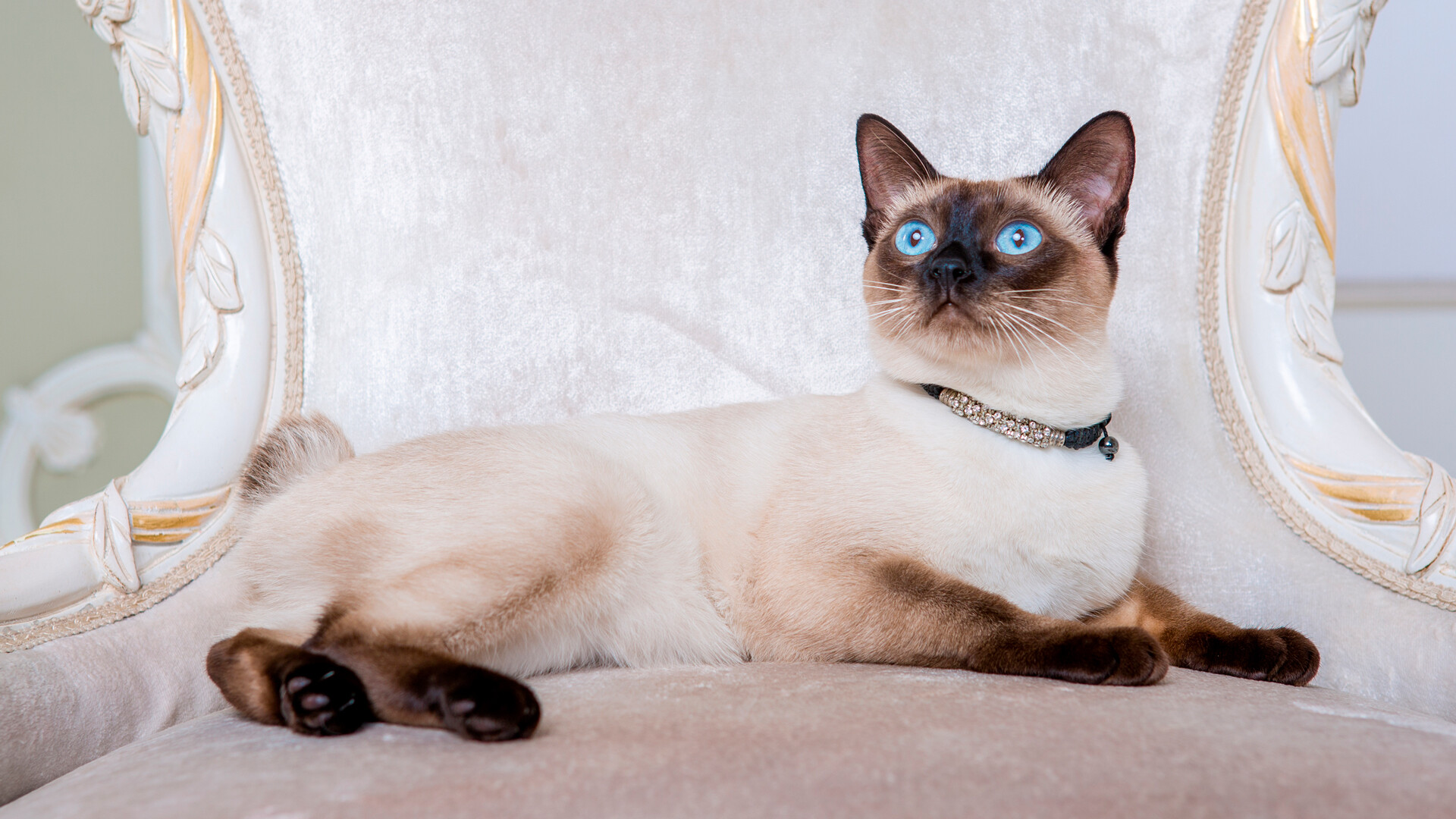
Thai cats are a well-known breed to be found around the world. They are distinguished by the contrasting coloration of their paws and face (colorpoint), bright blue eyes and "dog-like" affection. But have you ever encountered a short-tailed Thai cat? Mekong Bobtails are also an indigenous Southeast Asian breed, named after the Mekong River. But, why is it considered Russian?

In ancient times, many cats from Siam (as Thailand was called until 1932) had tails that were slightly kinked. Felinologists, half-jokingly, like to explain this particular feature by retelling a legend involving princesses in their bath hanging their bracelets on the tails of the cats, which are said to have bent under the weight of the metal. According to another account, Thai cats liked to hunt for fish and their long tail, which interfered with this activity, disappeared in the process of evolution. One way or another, the "kinks" in the tail are a genetic feature of cats from Southeast Asia. Some had shorter tails and others longer ones.
For a long time, Siam didn't allow its cats to be taken out of the country, regarding them as its exclusive property. They were only allowed to be kept in palaces or Buddhist temples. In addition to their unusual tails, the cats also had an exotic coloration known as ‘colorpoint’.
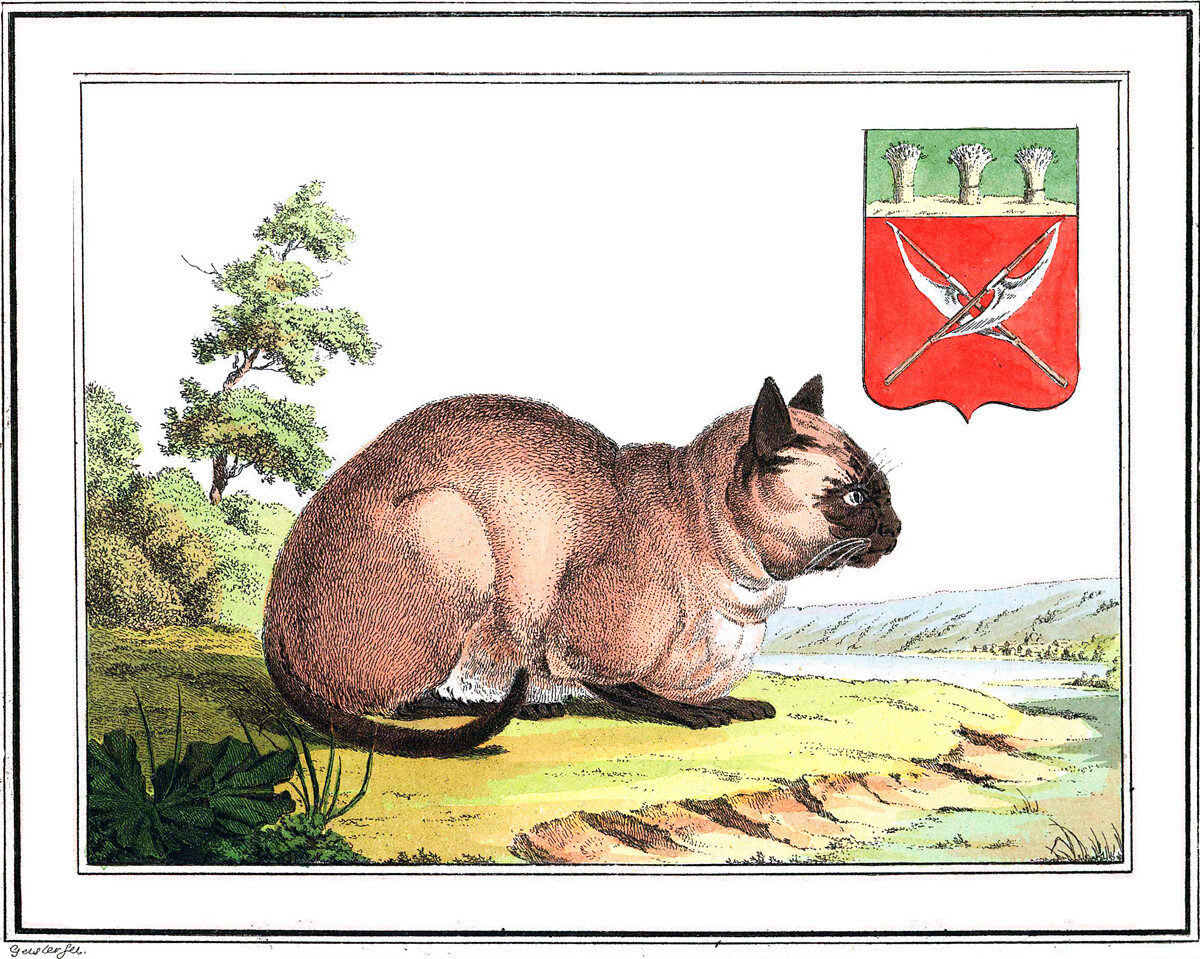
Christian Gottfried Heinrich Geissler's painting of a cat in a Russian province, 1802.
Public domainIn Russia, these cats were first described by Prussian zoologist Peter Pallas (the same person who discovered the manul, also known as the Pallas's cat). He encountered them in the settlement of Insar during a trip around the Penza Governorate. In a book about his travels around southern Russian provinces in the late 18th century, he compared them to minks. "The nose is masked by a black patch that also surrounds the eyes and ends in a pointed triangle on the forehead. The ears, paws and tail are very dark in color. The texture of the coat is more pleasing than that of an ordinary cat and is similar to the smooth and shiny fur of a mink."
As for how it ended up in a remote Russian province - arriving with trading caravans from Asia or in some other way - we can only guess. Nevertheless, other colorpoint cats also began to appear in Russia at that time. For example, the Neva Masquerade, a sub-breed of the Siberian cat.
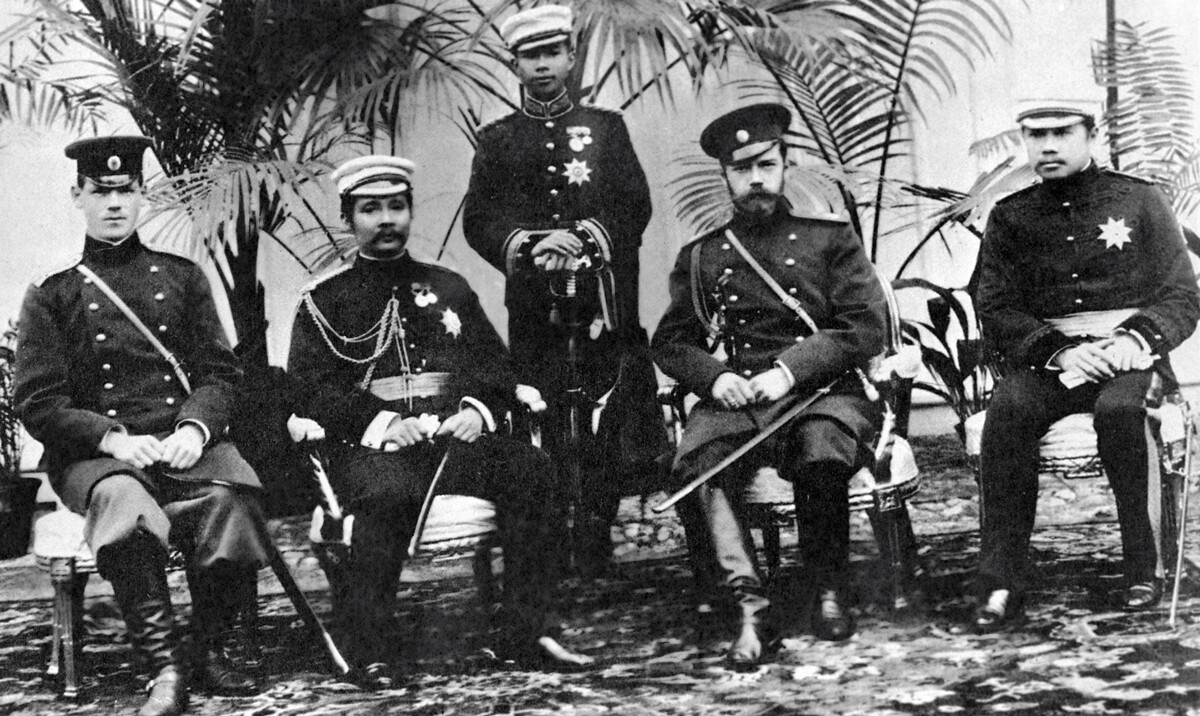
King Rama V (second left) during his visit to Russian Emperor Nicholas II, 1897.
SputnikWestern Europe became acquainted with these cats almost a century later: In 1870, the King of Siam presented two cats to an official of the British Embassy. Felinology was just emerging in Britain and these cats took part in the first shows in London. At the beginning of the 20th century, their descendants came to the U.S. Selective breeding led to the emergence of the Siamese cat breed with its wedge-shaped face, as well as the Thai cat with a round face. The tails were straightened, as breeders thought kinked tails looked ugly.
In the meantime, old Thai cat breeds were brought to Russia. King Rama V of Siam visited the Russian Empire in 1897. At the time, Siam was under threat of colonization by France and was looking for allies. Nicholas II gave Rama V a guards detachment for his royal palace. And, among various other gifts, the King of Siam gave the Russian emperor 200 palace cats of all sorts of different breeds. They ended up in the homes of Russian notables, had offspring and started to intermix with other cats.
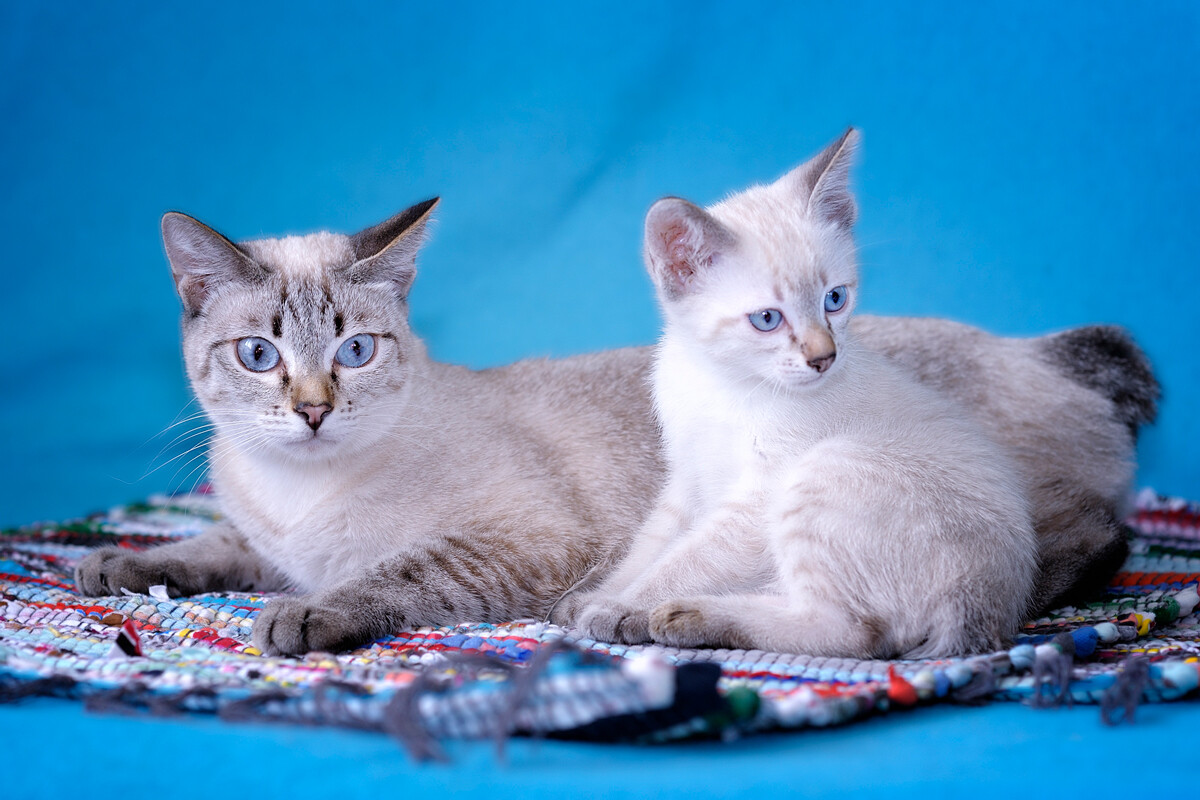
In the USSR, professional cat breeding only began in the late 1980s, although interest in the study of breeds - both Russian and foreign - had existed before. According to Olga Mironova, one of the pioneers of felinology in Russia https://zooprice.ru/cat/storycat/ocherki-rossiyskoy-felinologii.html, "the subject of pedigree cats only began to be discussed in Leningrad after ‘Siamese cats’" first appeared. I bought my first Siamese at the Kondratyevsky Market in 1960. I paid a fortune, spending the whole of my monthly salary as a surgical nurse to acquire a blue-eyed, milky-white thing with dark brown nose, ears and paws and with a stumpy tail curled in a spiral. That something proved to be a tornado stuffed inside a cat skin. Today, it would be called a Thai Bobtail, but, in those days, such subtleties went over our heads…" Several such cats were brought to Moscow in the 1960s by puppet theater founder Sergey Obraztsov after a tour of Europe. Other famous people also brought them from Asia.
The foreign "Thais" gradually started to intermix with the Soviet "Thais" and, when selective breeding began to be properly pursued, it turned out that a remarkable branch of the Thai breed had survived in Russia. Similar short-tailed cats from Southeast Asian countries were part of the selective breeding program. The breed was officially described by Russian felinologists and recognized as a Russian breed.
A minimum of 30 animals are needed to have a breed officially recognized. The breed was registered with the World Cat Federation (WCF) in 2004. Initially, they were called Thai Bobtails, but then the name was changed to Mekong Bobtails after the great Asian river. It was a way of distinguishing them clearly from other Thai and Siamese cats.
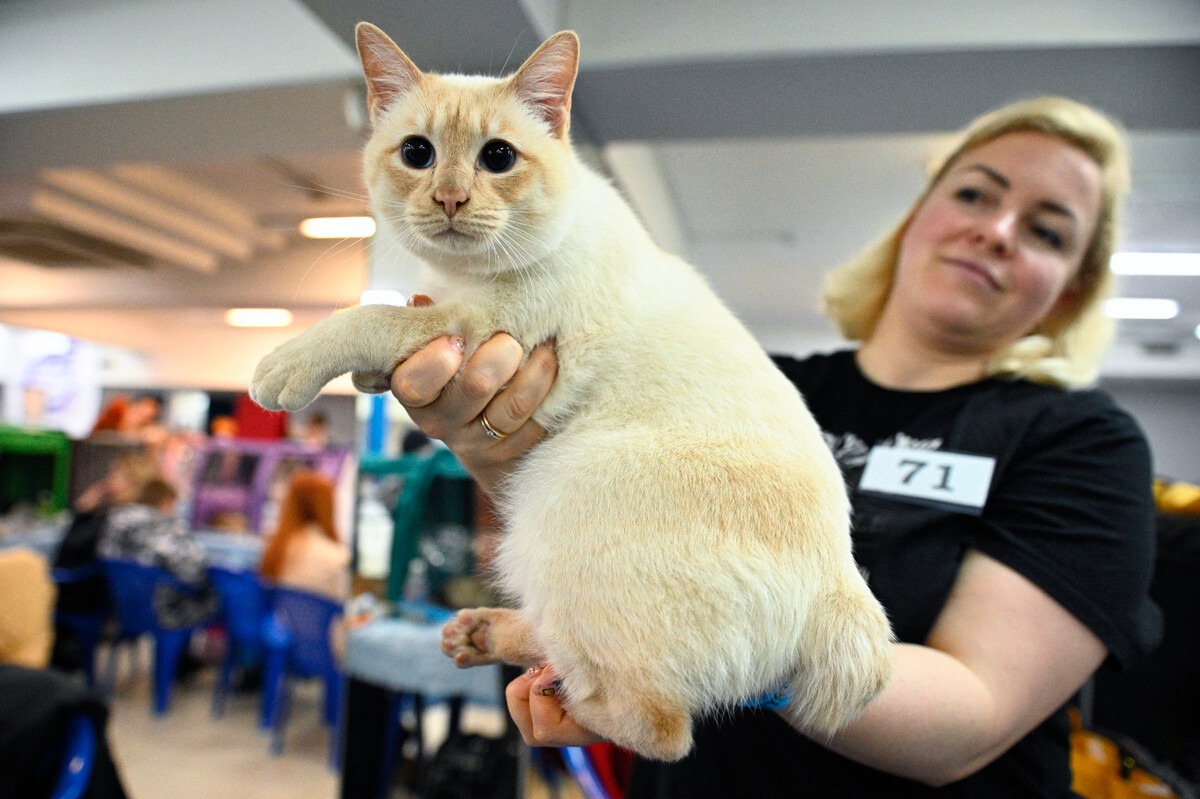
Modern-day Bobtails have a variety of shades of coat color and are distinguished by their bright blue eyes.
Mekong Bobtails must know they are descended from noble blood: They are independent and elegant. They don't just adore their human companions, but try to be with them all the time. Unlike many other breeds, they become attached to people rather than the place where they live. Their short tail means that their hind legs are more developed and they find it easy to scramble up rugs and curtains and to jump vertically.
Dear readers,
Our website and social media accounts are under threat of being restricted or banned, due to the current circumstances. So, to keep up with our latest content, simply do the following:
If using any of Russia Beyond's content, partly or in full, always provide an active hyperlink to the original material.
Subscribe
to our newsletter!
Get the week's best stories straight to your inbox